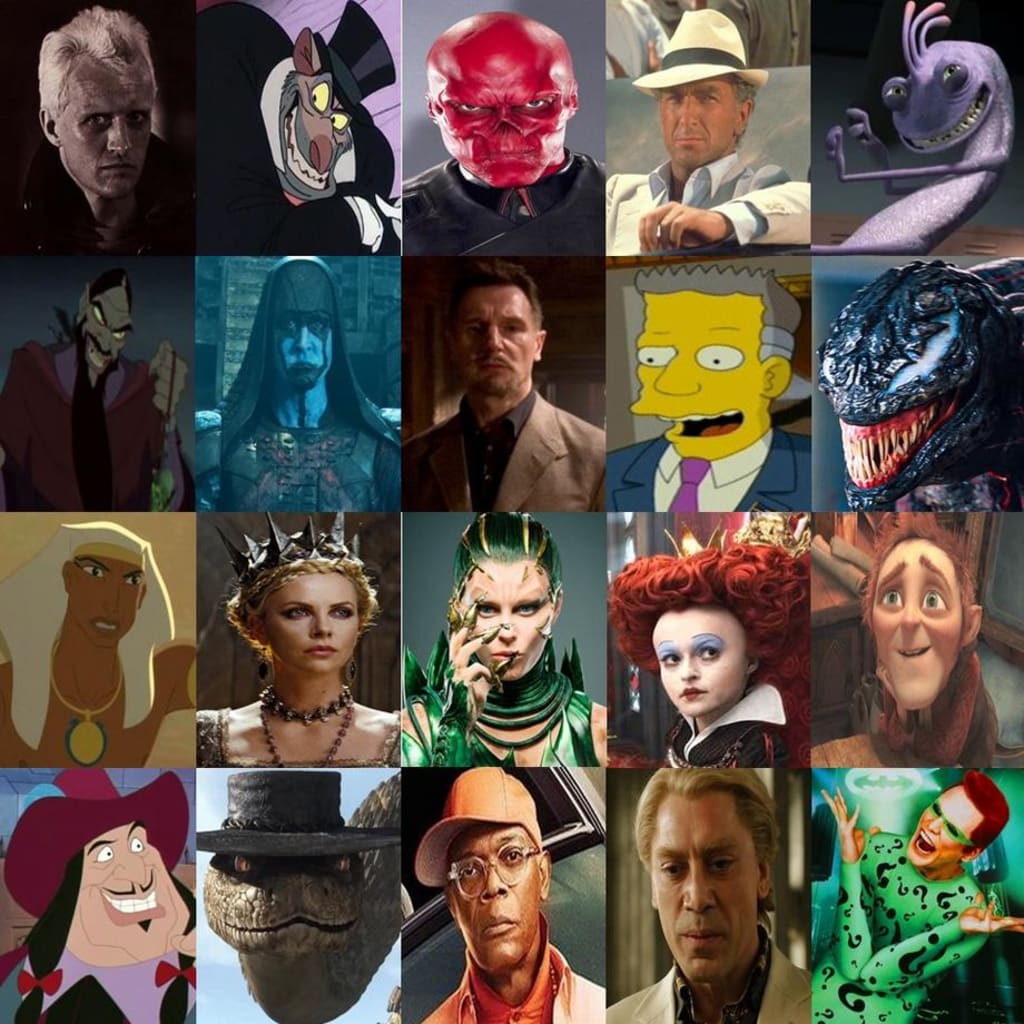Analyzing the Psychology of Villains
What Makes Them Memorable?

In the world of storytelling, villains play a crucial role in captivating audiences and adding depth to narratives. From iconic characters like Darth Vader to the Joker, villains have a unique ability to leave a lasting impression on viewers. But what exactly makes them so memorable? What psychological factors contribute to their appeal and intrigue? In this article, I'm going to delve into the psychology of villains and explore the elements that make them unforgettable in our collective imagination.
Complexity and Motivation
One of the key factors that make villains memorable is their complexity and underlying motivations. A well-developed villain is not simply evil for the sake of it; they have a distinct set of beliefs, desires, or traumas that shape their actions. By exploring their backstory and revealing the reasons behind their behavior, storytellers create multidimensional characters that challenge our moral compass and evoke empathy, despite their villainous deeds.
Moral Ambiguity
Villains often blur the lines between good and evil, challenging our perception of right and wrong. They may possess qualities that we can relate to or even admire, which adds a layer of complexity to their character. This moral ambiguity forces us to confront our own vulnerabilities and question the nature of humanity. By presenting villains with shades of gray, storytellers keep us engaged and invite us to explore the darker aspects of our own psyche.
Charismatic Presence
A memorable villain often possesses a charismatic presence that captivates audiences. It could be their charm, intelligence, or an undeniable magnetism that draws us in. This charismatic quality allows us to be both repelled and fascinated by the villain simultaneously. Their ability to command attention and influence others creates a sense of intrigue, making them compelling figures that we can't help but watch with a mix of fear and admiration.
Symbolic Representation
Villains often serve as symbolic representations of our deepest fears, anxieties, or societal issues. They embody the darkness that exists within us or reflect the challenges and conflicts prevalent in the world. By externalizing these internal or external struggles, villains become powerful metaphors that resonate with audiences on a deeper level. They become cautionary tales, forcing us to confront uncomfortable truths and prompting discussions about important themes and issues.
Antagonistic Relationship with the Hero
The dynamic between the villain and the hero is a critical aspect that contributes to the memorability of villains. The clash between these opposing forces creates tension and drives the narrative forward. The villain serves as a formidable adversary, pushing the hero to their limits and testing their values and strengths. This antagonistic relationship creates a captivating battle of wits, power, and ideologies that keeps audiences engaged and invested in the outcome.
Unique Visual Design
Visual design plays a significant role in making villains memorable. From their distinctive costumes and hairstyles to their menacing physical appearances, villains often have an iconic and visually striking presence. The visual cues associated with the villain become instantly recognizable and can evoke strong emotions or associations. These visual elements contribute to their overall impact and make them instantly identifiable even outside the context of their stories.
Psychological Depth
Exploring the psychological depths of villains adds layers of intrigue and complexity to their characters. Understanding their thought processes, traumas, or psychological disorders can offer insights into their motivations and actions. By delving into their psyche, storytellers create characters that are not only frightening but also psychologically fascinating. This psychological depth allows us to examine the complexities of the human mind and grapple with the fine line between sanity and madness.
Memorable Dialogue and Catchphrases
Memorable villains are often accompanied by unforgettable dialogue and catchphrases. From " "Luke, I am your father" to "Why so serious?" these lines become part of our cultural lexicon and are instantly recognizable. The power of these catchphrases lies in their ability to distill the essence of the villain's character and their motivations into a few impactful words. They become quotable moments that are shared, referenced, and even imitated, further solidifying the villain's place in pop culture history.
Psychological Manipulation
Villains often possess the ability to manipulate others, whether through deception, manipulation, or psychological warfare. Their cunning tactics and ability to exploit vulnerabilities make them formidable adversaries. By understanding and exploiting the psychology of their victims, villains can gain control and power over them. This psychological manipulation adds an element of suspense and unpredictability to the narrative, leaving audiences on the edge of their seats and fascinated by the villain's ability to bend minds to their will.
Legacy and Impact
The most memorable villains leave a lasting legacy and continue to resonate with audiences long after the movie ends. They become cultural icons, spawning fan theories, cosplay, and even academic discussions. The impact of these villains extends beyond the screen, influencing popular culture, inspiring artistic interpretations, and becoming part of our collective consciousness. Their enduring presence solidifies their status as unforgettable characters, forever etched in the annals of cinematic history.
In conclusion, the psychology of villains is a complex and intriguing subject. From their complexity and motivations to their moral ambiguity and charismatic presence, each element contributes to their memorability. Through their symbolic representation, antagonistic relationships with the hero, unique visual design, psychological depth, memorable dialogue and catchphrases, psychological manipulation, and lasting legacy, villains become more than just adversaries in a story—they become captivating characters that spark our imagination, challenge our perceptions, and leave an indelible mark on our culture.
About the Creator
L A McFarlane
I love writing about pop culture, delving into thought-provoking themes and subjects that motivate and challenge readers' perspectives and encourage them to reflect on their own beliefs.
I’m also currently writing my first fictional novel.






Comments
There are no comments for this story
Be the first to respond and start the conversation.